| HOME |
|---|
ANDROMEDA
The Princess
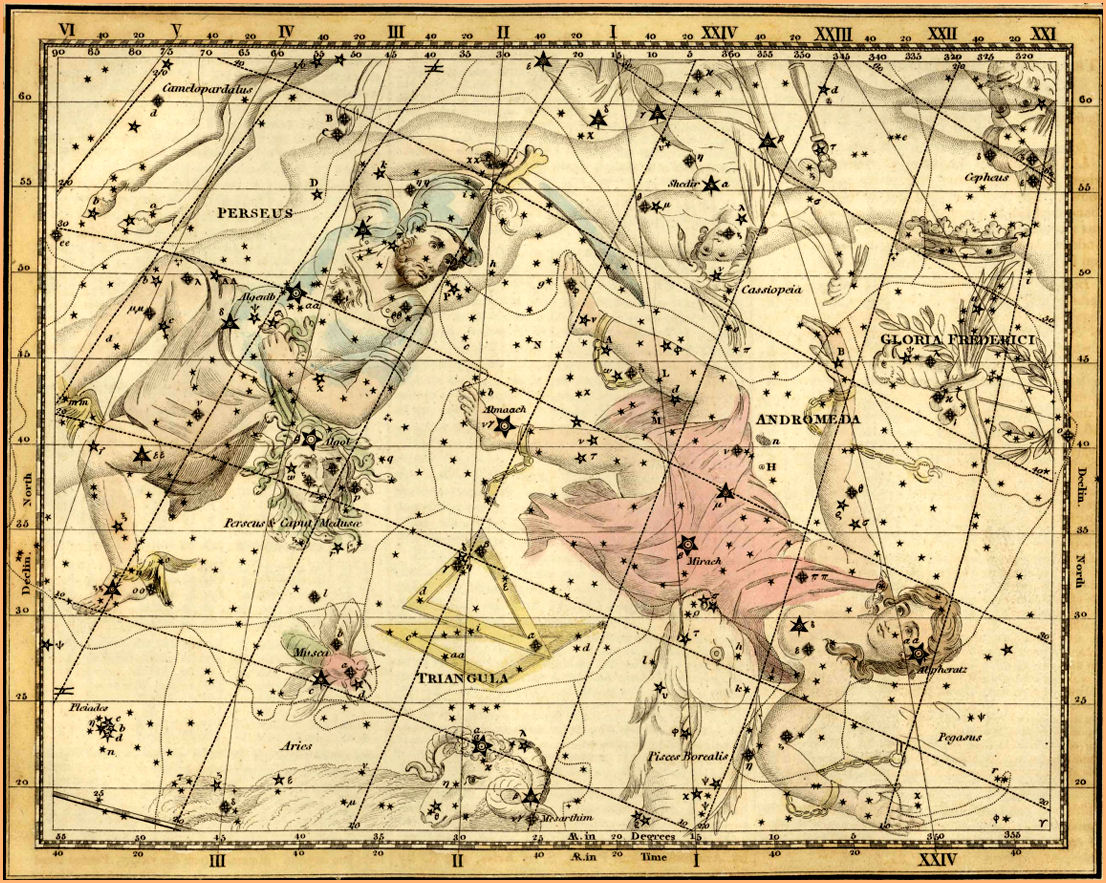
Andromeda - Celestial Atlas by Alexander Jamieson - 1822
| HOME |
|---|

The constellation Andromeda contains our closest galactic neighbour, the spectacular Andromeda galaxy - the farthest object visible to the naked eye - and the princess Andromeda is the central figure in one of the most famous tales of the ancient world, filling our late autumn sky with a family of six constellations.
Long ago, in the land of Ethiopia, there reigned a King Cepheus, and his Queen Cassiopeia. Their daughter, the Princess Andromeda, was so beautiful the Queen couldn't help but boast about her, even going so far as to proclaim that her daughter was more beautiful than the Nereids - nymphs of the sea. The jealous and spiteful nymphs went to their master, Neptune, lord of the sea, crying out for retribution. The great god Neptune, second in power and authority only to his brother Jupiter, could never say no to his nymphs, and sent the sea monster Cetus to wreak vengeance upon the boastful Queen. Cetus ravaged the shores of Ethiopia, spreading death and destruction along the entire coastline of the kingdom. A desperate King Cepheus consulted an oracle, and was told the only way to stop the monster's rampage was to deliver up his daughter, Andromeda, for Cetus to devour.
Andromeda was chained to a rock by the sea, and left for Cetus. But when the monster charged at the young princess, the hero Perseus suddenly came diving out of the sky, swooping in between the monster and its prey. Mounted on the great winged horse, Pegasus, he was returning from a victorious battle with the evil Medusa, when he heard Andromeda's cries. He pulled Medusa's severed head out of his satchel, a head so hideous that all who looked upon it were instantly turned to stone. When the sea monster saw the head, covered with writhing snakes, it too turned to stone, and sank beneath the waves.
Perseus immediately fell in love with Andromeda, and carried her off to be his bride. It is said the figures of the Andromeda story were placed in the sky as an eternal reminder of the perils of mortal arrogance.
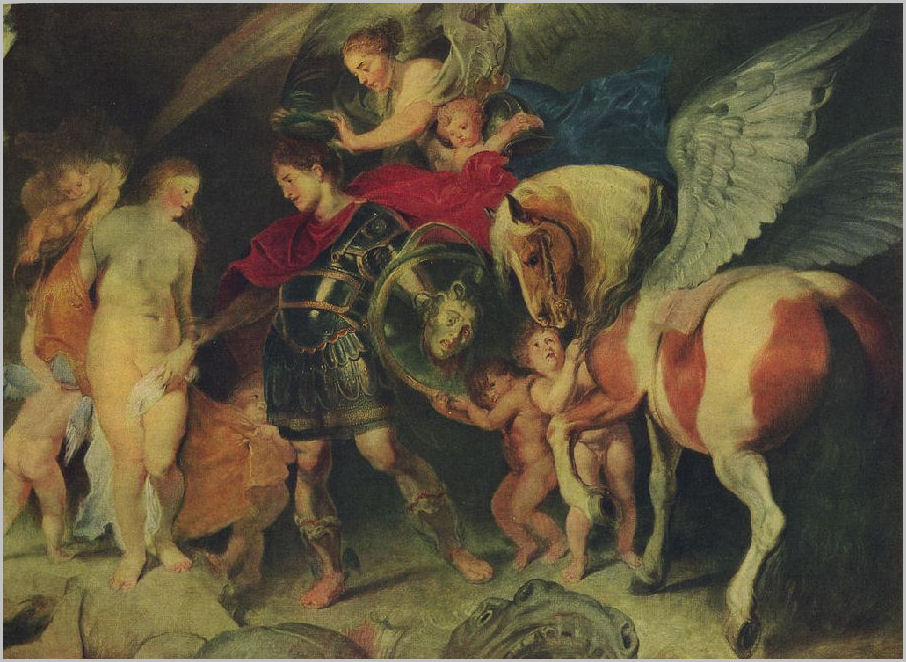
Of all the tales in the night sky, the Andromeda story contains the most constellations. No less than six figures are up in the sky to help tell her story. When the Autumn chill is in the air, the Andromeda story is front and centre, filling the fall sky. High in the south the great square of Pegasus will soon catch your eye, with Andromeda's willowy limbs trailing off to the east. Down below, the sea monster Cetus lurks just above the horizon. High overhead, in the middle of the Milky Way,, is the unmistakable "W" of Queen Cassiopeia, with the hero Perseus on one side, and King Cepheus on the other.
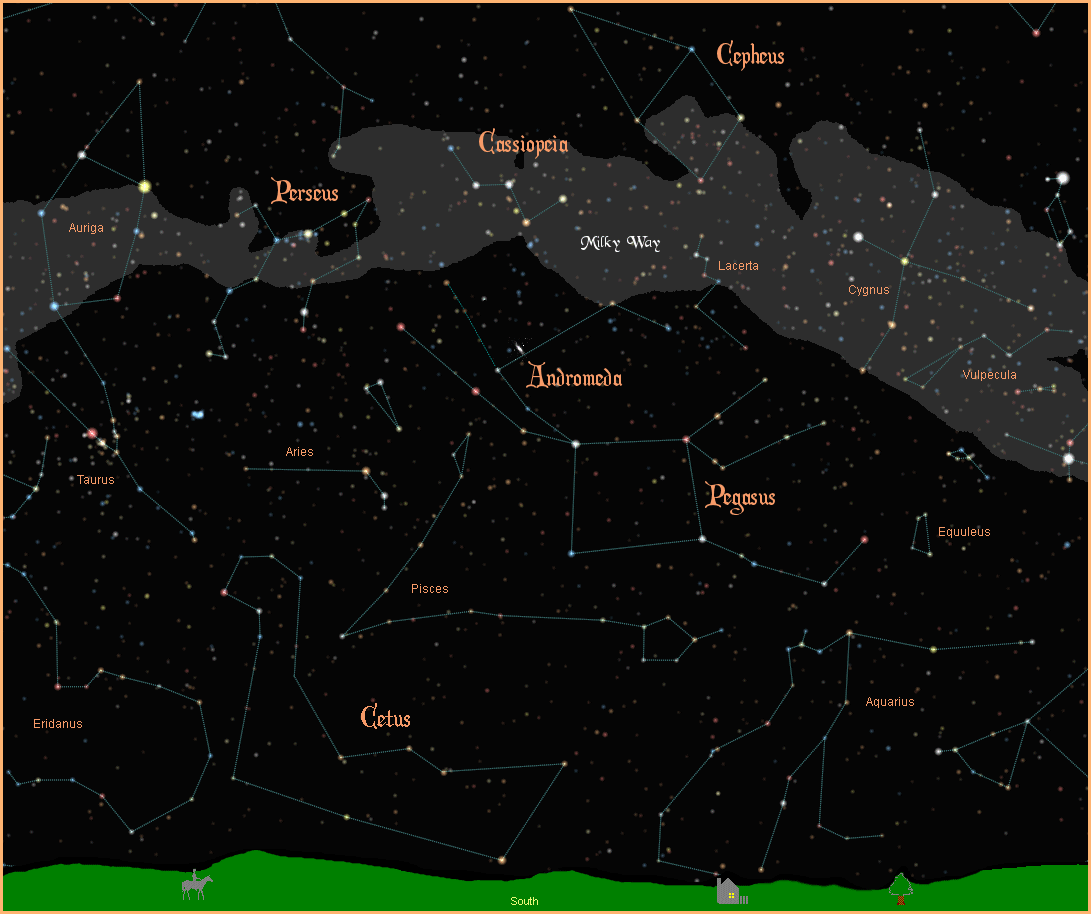
The alpha star in Andromeda is Alpheratz, Arabic for navel of the horse, noting that the constellation Pegasus, the winged horse, borrows the star from Andromeda to complete the Great Square of Pegasus, a familiar landmark of the Autumn sky. Alpheratz is a spectroscopic binary, two stars that orbit each other too close to differentiate optically. The primary (brighter) of the pair is a B8 blue subgiant, with a magnitude of 2.02. It is 97 light years away, and with a surface temperature of 13,000 degrees C, about 200 times brighter than the Sun.
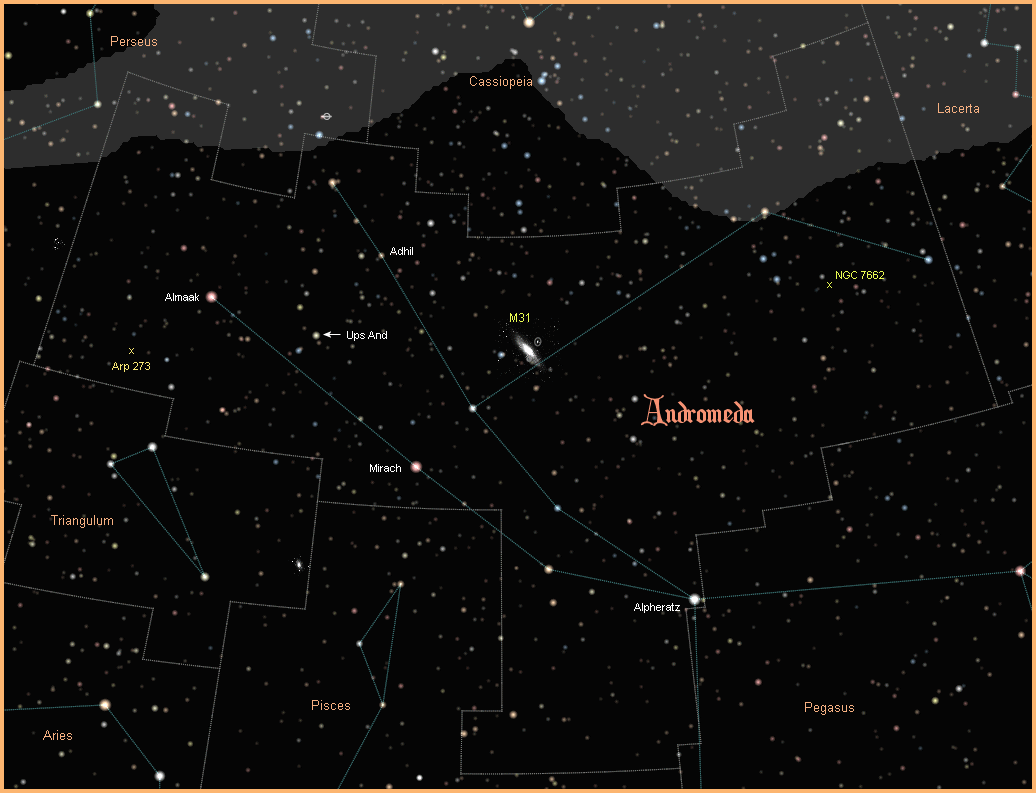
Beta Andromedae is named Mirach. postulated by Allen as most likely derived from the Arabic "mizar", meaning girdle. It is an M0III red giant, with a variable magnitude between 2.01 and 2.10. It is about 200 light years away.
Gamma Andromedae is Almaak. The name precedes the Andromeda tale, coming from the Arabic name for a small predatory mammal of the middle east. It is a binary star system, and a particularly pleasing sight in a small telescope, with one of the pair appearing orange, and the other blue. The primary star is a K3II orange supergiant, with a magnitude of 2.26. The dimmer companion is a triple star system, making Almaak a quadruple star system, about 350 light years away.
Xi Andromedae is named Adhil, from the Arabic "Al Dhail" the train (of a garment). It is a K0III yellow/orange giant with a magnitude of 4.87, about 215 light years away.
To date we have discovered sixteen stars in Andromeda that support planetary systems, and one of these stars deserves special attention - the star Upsilon Andromedae (Ups And). First, with a magnitude of 4.09, it is easily visible with the naked eye. Second, it is relatively close, only 43.9 light years from Earth. And third, it is known to have at least four planets in orbit around it.
What makes it even more interesting, Upsilon Andromedae is a binary system. The primary star is an F8 yellow-white dwarf. The secondary star is anM4 red dwarf, orbiting approximately 70 billion miles from the primary. It is the first known multiple planet system orbiting a binary star. All four planets are Jupiter sized, and orbit the primary star, known as Upsilon Andromedae A. For more information on these and other extrasolar planets, visit NASA's New Worlds Atlas, and The Open Exoplanets Catalogue.
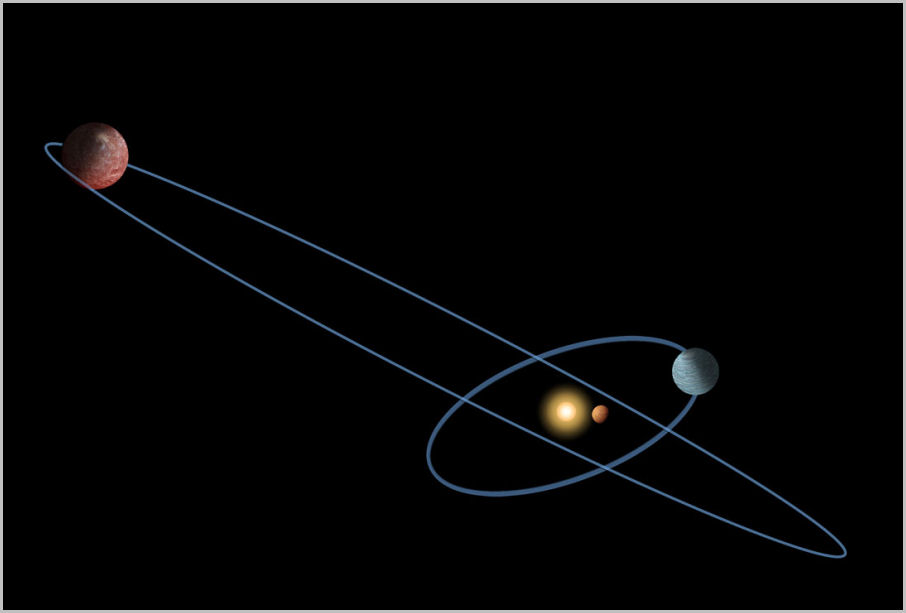
The main attraction in the Andromeda constellation is the famous Andromeda galaxy, otherwise known as M31 (NGC 224). The reason it is so spectacular is that it is so close, although "close" in this case is strictly a relative term. The Andromeda galaxy is two and a half million light years away, a distance too vast for the Human mind to even imagine. It is only "close" relative to all the other galaxies in the sky - the hundreds of billions of galaxies in the known Universe - that are all very much farther away. The only reason our telescopes can see them at all is because they shine with the combined brilliance of the hundreds of billions of stars they contain.
And out of the hundreds of billions of galaxies that fill our night sky, the Andromeda galaxy is the only one we can see with our naked eye. It is officially the most distant object visible with the naked eye. Once you know where to look, it is actually quite easy to spot. And it's getting easier, because the Andromeda Galaxy is moving closer. Not everything in our expanding Universe is moving away from us. The Milky Way and Andromeda galaxies are moving towards each other, and in four billion years they will collide and become one.
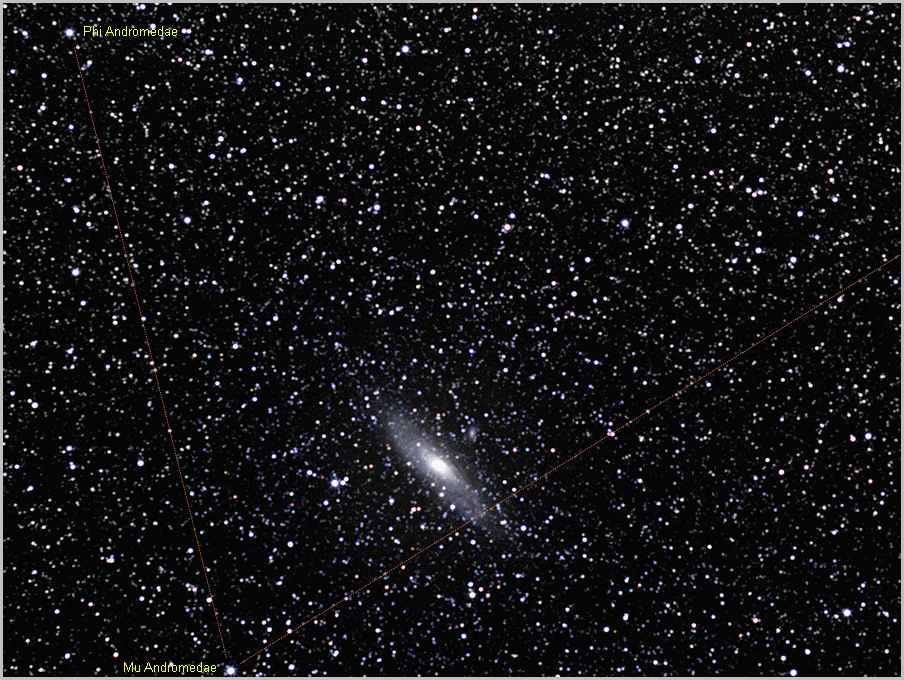
The Andromeda Galaxy is 141,000 light years in diameter compared to the Milky Way at 100,000 light years across. Andromeda contains an astounding one trillion stars, compared to the Milky Way's 400 billion stars. Like the Milky way, Andromeda has a number of dwarf satellite galaxies that follow it along, the most well known being M32 (NGC 221), and M110 (NGC 205).
The Andromeda Galaxy contains possibly the most famous star in the heavens, a cepheid variable named Hubble variable number one, or V1. The regular fluctuations of cepheid variables allow for very precise distance measurements, and in 1923 famed astronomer Edwin Hubble used this star to definitively prove for the first time that the Universe extended beyond our Milky Way Galaxy, and was in fact orders of magnitude larger than anyone could have ever imagined. It was akin to discovering that the Earth was not flat, and it changed everything.
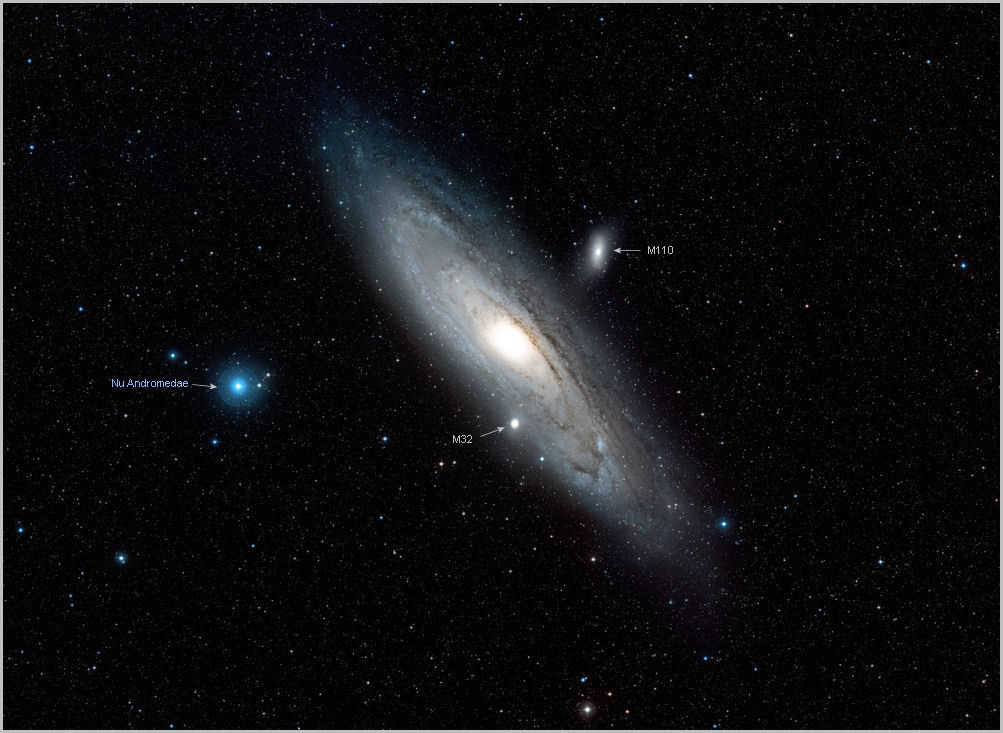
Back inside our own galaxty, we have the planetary nebula NGC 7662, known as the Blue Snowball Nebula. With a magnitude of 8.6 it is within reach of smaller telescopes. The nebula is an immense bubble of gas shed by a dying star at its centre, and the blue tint of the nebula is caused by an abundance of ionized oxygen in this gas. The distance to the nebula is difficult to determine, estimated between 2,000 and 6,000 light years.
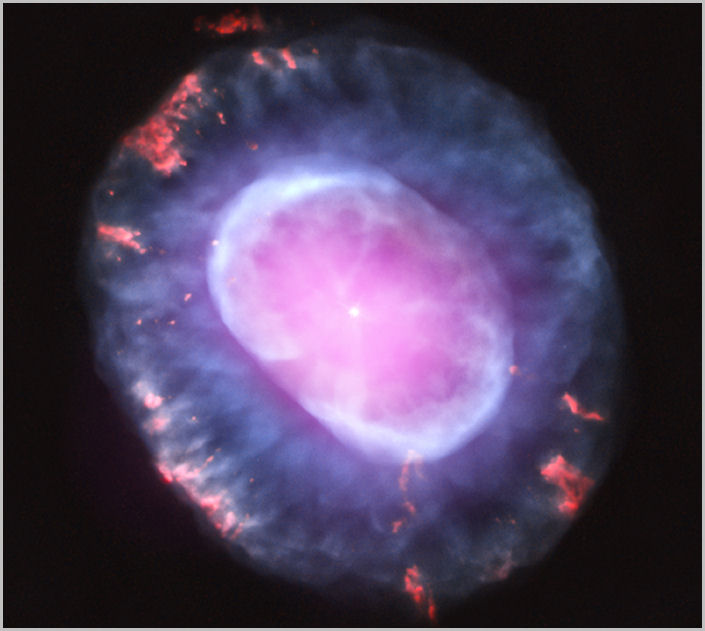
Very much farther away, residing out at the very great distance of 300 million light years, are the merging galaxies of UGC 1810 (above), and UGC 1813 (below), collectively known as Arp 273. Out of range of most backyard scopes, the pair make a striking picture through the eyes of the Hubble Space Telescope.
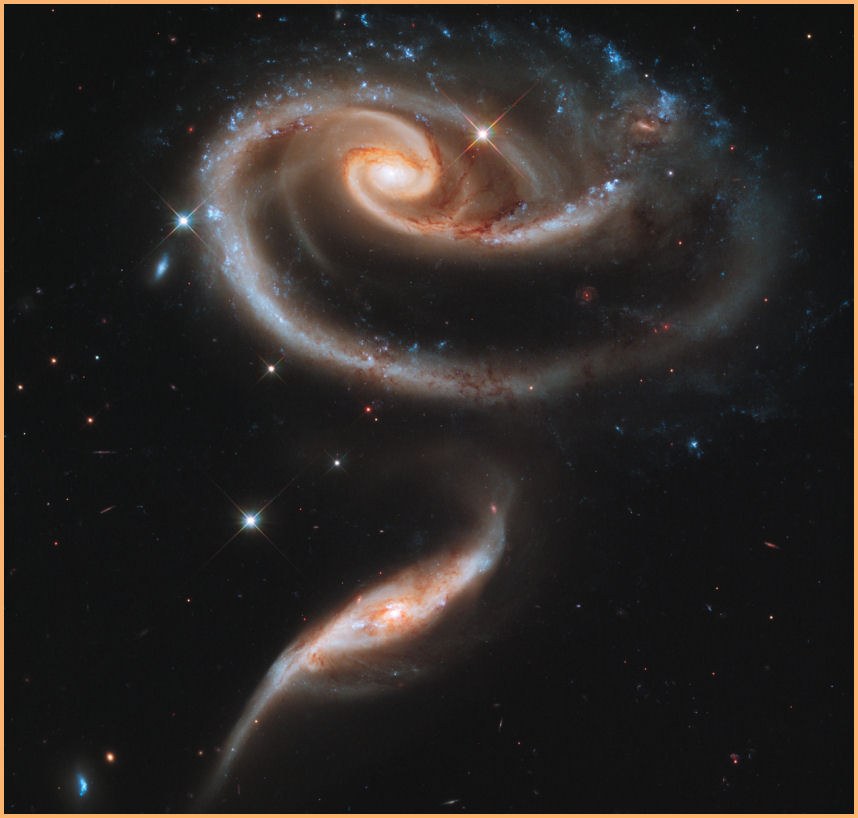
|
|
|
|
|
|